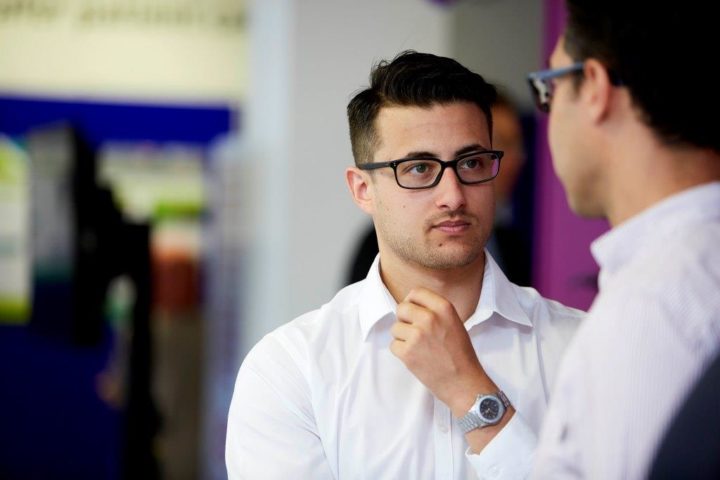Date published: 06/04/18

Clearing the medtech commercialisation fog – Ben Golland
- Name: Ben Golland
- Current Organisation: Institute of Medical and Biological Engineering – University of Leeds
- Current Position: PhD Researcher
- Secondment organisation: Medipex
My name is Ben Golland and I’m a second-year PhD student at the Centre for Doctoral Training in Tissue Engineering & Regenerative Medicine, University of Leeds.
Question marks along the commercialisation pathway
As a PhD student, I feel my aim is to build skills in a broad range of medical device development. My project focuses on the manufacture of a tissue engineering scaffold for spinal cord injury repair, allowing me to explore everything from materials to testing to in vitro evaluation. Whilst this is comprehensive at the research end of the spectrum, the early stage of the project means it is many years from even the prospect of reaching patients, and so, on its own, gives me little expertise and experience in the next stage of development; the route to market. For this insight I have had to look elsewhere.
In fact, throughout my time at Leeds I have attended seminars, workshops and lectures briefing on the difficulty and danger of the translation pathway. We are told all new medical devices must navigate through narrow regulation, all must avoid the IP territory of competitors, and all must hunt for cash to make it all possible. The ability to survive is not restricted to how good an idea is, as I once thought. In an effort to understand more about the obstacles above, I have also played house in the hypothetical world of medtech startups, through our internal MedTech Business & Entrepreneurial Skills Training (BEST) competition and the national Biotech Young Entrepreneurs Scheme (YES). However, I now feel I am ready for some real-world experience.
As such, I have decided to undertake a secondment at Medipex, a centre designed to help NHS staff and departments in the Yorkshire & Humber and East Midlands regions maximise the reach of any healthcare innovations. At this stage, prior to my start date, I am filled with questions. How do inventors spot opportunities from clinical needs? How are projects evaluated to build a picture of the work needed to be done? What is needed to help ideas bridge the ‘valley of death’ and make it through the clinic to patients? Over the next few weeks I hope to try and answer some of these questions and I doing so, gain a more detailed understanding at this end of the translation pathway.
Clearing the commercialisation fog
Over the last 6 weeks, I have been learning with real projects how to build a detailed plan of an innovation, map out the surrounding patent landscape and fill in the underlying background.
Evaluating projects in this way has helped me answer one of the main questions I had before starting the secondment, in how to identify the work needed to be done to commercialise a project. It is at this point that the fog in front of the commercialisation pathway begins to clear and the value of an innovation – to patients, the healthcare sector and financially – can be estimated. Over the last 6 weeks, I have been learning with real projects how to build a detailed plan of an innovation, map out the surrounding patent landscape and fill in the underlying background. Evaluating projects in this way has helped me answer one of the main questions I had before starting the secondment, in how to identify the work needed to be done to commercialise a project. It is at this point that the fog in front of the commercialisation pathway begins to clear and the value of an innovation – to patients, the healthcare sector and financially – can be estimated.
Correspondingly, what also becomes clear is the effort required to realise that value. Another question I wanted to answer was how projects avoid succumbing to the ‘valley of death’ en route to market, as we are all aware of the difficulty in developing medical devices. What seems crucial is that effort can only be put in by willing, relevant players that may be able to pave the treacherous pathway. Understanding the aims of potential players, the motives of different stakeholders and the availability of cash all influence translation and the chances of success. Other small details I have learned, that can have big impacts further down the commercialisation pathway, include being clear who actually owns the IP and how stakeholders will be reimbursed. Outlining this from the start and structuring agreements appropriately can ensure balance and fairness. Furthermore, setting milestones with fixed dates ensures projects progress when other parties become involved and success relies on synergy.
In summary, it has been an enlightening few weeks and there is still plenty of projects I can practice my new skills on. In the home stretch I hope to answer the first question I outlined, how inventors spot opportunities for new innovations, and also reflect on the experience as a whole in both specific medtech translation and in broader business.

